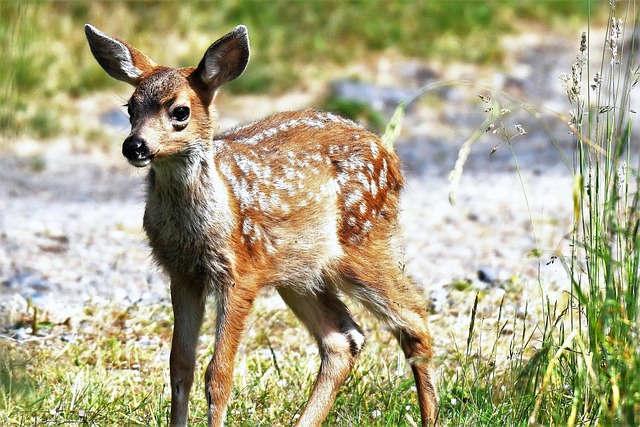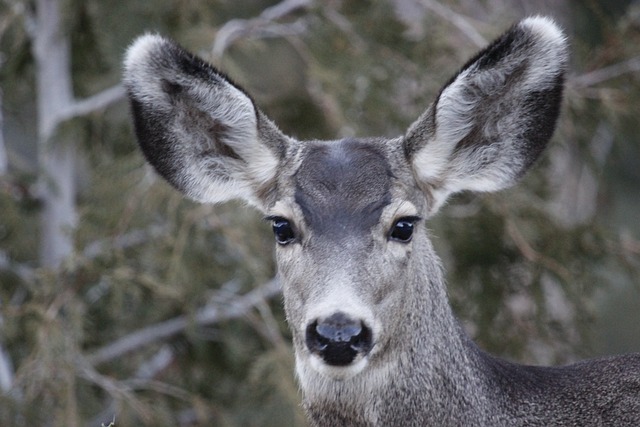The mole deer, a term that is not widely recognized in the scientific community, seems to refer to an unusual creature sometimes mentioned in folk legends or a blending of two distinct animals: moles and deer. However, the term might not represent an actual animal species in formal zoology, so let’s explore two possible interpretations based on the term “mole deer.”
Mole and Deer Hybrid Concept: The idea of a “mole deer” could be a fictional or mythological creature, born from the imagination of storytellers. It might combine characteristics from both moles and deer. This creature would hypothetically have the body of a mole, with its characteristic burrowing behavior, large paws, and small size, but also possess the elegant features of a deer, such as antlers and the long legs of a cervid.

Classification and Description
Scientific Name: Odocoileus hemionus
Common Name: Mule Deer
Family: Cervidae
Order: Artiodactyla
Physical Characteristics
Size:
Adult mule deer vary in size depending on the region.
Males (bucks): Typically weigh between 120 and 300 pounds (55–136 kg) and stand 3 to 3.5 feet (90–105 cm) at the shoulder.
Females (does): Typically weigh 95 to 200 pounds (43–91 kg).
Distinguishing Characteristics:
Large, mule-like ears that can rotate freely to detect sound.
A black-tipped tail distinguishes them from white-tailed deer, whose tails are completely white underneath.
The coat color ranges from reddish-brown in summer to grayish-brown in winter.
Antlers:
Male mule deer grow antlers that become spiny as they grow, creating a unique “branched” appearance.
The antlers are shed annually, growing back each year during breeding season.
Distribution and Habitat:
Found throughout western North America, from the coastal islands of Alaska to the deserts of northern Mexico.
Prefer open woods, grasslands, and areas near rivers or streams.
Adapt well to dry desert environments, mountainous regions, and agricultural areas.
Behavior and Ecology
Diet:
Mule deer are herbivores with a varied diet, eating grasses, shrubs, twigs, leaves, and fruit.
They are known for browsing rather than grazing, focusing on high-quality food sources.
Activity Patterns:
Crepuscular, meaning most active at dawn and dusk.
Adaptable foragers, feeding times vary depending on weather and human activity.
Social Structure:
Deer usually live alone or form small bachelor groups.
Female deer live in groups with their fawns.
Communication:
Does rely on visual cues, scent markings, and vocalizations for communication.
Gait:
Known for a unique gait called “stotting,” where they leap high with all four feet on the ground at once, helping them to move across rough terrain.
Reproduction
Breeding Period (Rut):
Occurs in late autumn (October to December).
Does compete for female doe, often engaging in bouts using their antlers.
Conception:
Lasts about 200 days, with fawns born in late spring or early summer (May to June).
Typically, a female deer gives birth to one or two fawns.
Baby Deer Development:
Baby deer are born with a spotted coat for camouflage and remain hidden for the first few weeks of life.
They begin following their mother and are weaned within a few months.
Predators and Threats
Natural predators include mountain lions, coyotes, wolves, bobcats, and bears.
Humans pose significant threats through hunting and habitat encroachment.
Diseases such as chronic wasting disease (CWD) and epizootic hemorrhagic disease (EHD) can affect populations.
Conservation Status
IUCN Status: Least Concern
Mule deer populations are generally stable but decline locally due to habitat loss, overhunting, and disease.
Conservation efforts focus on habitat restoration, regulated hunting, and monitoring disease outbreaks.
Interesting Facts
Mule deer can detect predators from great distances due to their keen hearing and excellent eyesight.
They are named because of their large ears, which resemble mule ears.
Unlike their cousin, the white-tailed deer, mule deer have very fast movements, allowing them to efficiently navigate uneven terrain.
They play an important role in the ecosystem by influencing plant growth and providing prey for larger predators.

Without additional context, the term “mole deer” is not easily recognized as a legitimate species in the scientific community. It could be a local term or an attempt to describe an animal with characteristics resembling both moles and deer

